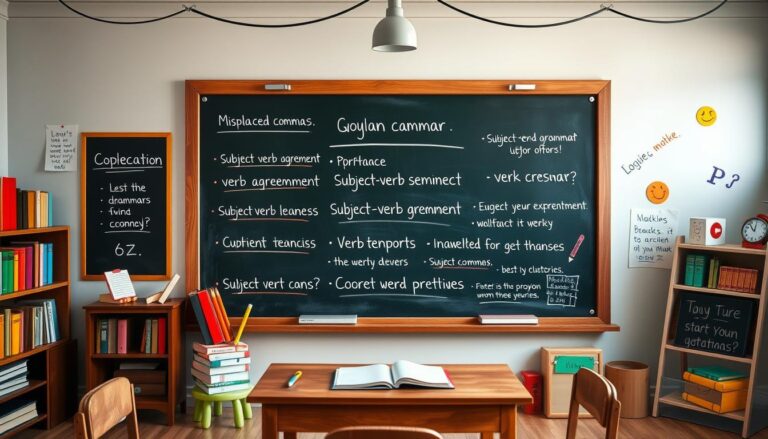Parent’s Role as a Learning Coach in Online School
Have you ever wondered how parents can make a real difference in their child’s online education? The shift to digital classrooms has brought new challenges and opportunities, and parents play a pivotal role in ensuring success.
In online school, parents often step into the role of a Learning Coach. This means guiding the student, communicating with teachers, and ensuring they make the most of digital resources. It’s not just about supervision—it’s about being an active partner in their academic journey.
From managing schedules to creating a distraction-free environment, the responsibilities are significant. But the rewards are even greater. A supportive Learning Coach can boost a student’s confidence, focus, and overall performance.
As we explore this role further, we’ll uncover practical tips and strategies to help you thrive as a Learning Coach. Together, we can create a positive and productive online school experience for every student.
Introduction to the Learning Coach Role
What does it take to create a thriving online learning environment at home? As parents, our involvement is key to ensuring our child’s success in virtual classrooms. By stepping into this role early, we set the tone for a productive and positive academic year.
Establishing Our Involvement
Our hands-on participation helps build a supportive home environment. This includes working closely with teachers and leveraging digital platforms to create a personalized experience. By staying engaged, we ensure our child’s unique needs are met.
Setting the Stage for Online Learning Success
Digital tools like lesson guides and interactive videos enhance the educational journey. Consistency in our support complements formal teaching, helping students stay focused and motivated. As the academic year progresses, our role adapts to meet evolving demands, ensuring continuous growth and success.
Understanding the Role of a Learning Coach
What does it mean to be a guiding force in your child’s online education? As parents, we step into a unique position that blends mentorship, supervision, and collaboration. This role is essential for ensuring our children thrive in a virtual classroom setting.
Defining the Learning Coach Position
Our primary responsibility is to coordinate communication between students and teachers. We monitor progress, provide timely intervention, and ensure assignments are completed. This hands-on approach creates a structured and supportive environment for academic success.
How Our Involvement Shapes Student Success
Working closely with teachers, we build a seamless support network. This collaboration helps address challenges early and keeps students on track. Our experience in managing schedules and fostering focus directly impacts their academic performance.
As our children grow, our role evolves. In elementary years, we provide daily oversight. By high school, we transition to mentorship, encouraging independence while staying engaged. This adaptability ensures continuous growth and achievement.
Key Learning Coach Responsibilities
What daily tasks are essential for supporting our child’s virtual education? As parents, we play a vital role in ensuring their success by managing their schedule, tracking progress, and maintaining open communication with teachers. This hands-on approach helps create a structured and supportive environment for academic growth.
Daily Supervision and Communication
Our daily supervision includes ensuring attendance in live classes and monitoring assignment completion. By staying involved, we help our child stay focused and motivated throughout the day. Regular communication with teachers is also crucial. It allows us to address challenges early and find proactive solutions to support their progress.
Monitoring Student Progress and Engagement
Tracking assignments and grades is a systematic process that helps us understand our child’s performance. We use digital tools to monitor their engagement in class and identify areas where they may need extra support. This role requires specific skills, such as organization and time management, to ensure they stay on track.
Adapting our support to different grade levels is equally important. Younger students may need more hands-on guidance, while older students benefit from mentorship that encourages independence. By tailoring our approach, we ensure their unique needs are met at every stage of their academic journey.
- Observe live classes to ensure steady progress.
- Use digital tools to track assignments and grades.
- Communicate regularly with teachers to address challenges.
- Adapt our role to meet the needs of different grade levels.
In the Georgia Cyber Academy, the role of the Learning Coach is crucial for student success. Consistent supervision and communication ensure our child thrives in their online education.
Engaging with Teachers and Online Resources
How can we ensure our child’s academic growth in a virtual setting? Partnering with teachers and leveraging digital tools is essential for overcoming engagement challenges and fostering success. By building strong relationships and using available resources effectively, we create a collaborative environment that supports their development.
Building Productive Teacher Relationships
Engaging with teachers starts with open communication. Regular check-ins help us stay informed about our child’s progress and address any concerns promptly. Asking the right questions during these interactions ensures we understand their needs and can provide targeted support.
Trust is a cornerstone of these relationships. By maintaining consistent communication, we build rapport with school staff. This collaboration directly contributes to the overall success of the online education program, ensuring our child stays on track.
Allocating Time Effectively
Balancing supervision and teacher engagement requires careful time management. Here’s a breakdown of the time commitment for different grade levels:
| Grade Level | Weekly Time Commitment |
|---|---|
| Elementary School | 4-6 hours |
| Middle School | 1-3 hours |
| High School | 1-3 hours |
By allocating our time wisely, we ensure our child receives the support they need at every stage. This approach not only enhances their understanding but also fosters independence over time.
Using digital tools like lesson guides and interactive videos further enriches their experience. These resources complement teacher interactions, creating a well-rounded educational journey. Together, we can help our child thrive in their online education.
Strategies to Support Student Success at Home
How can we create a structured yet flexible environment for our child’s online education? The key lies in balancing time management with fostering independence. By implementing practical strategies, we can help our child thrive in their virtual classroom.
Implementing Time Management Techniques
Effective time management is essential for balancing online classes, assignments, and offline activities. Start by creating a daily schedule that includes dedicated study time, breaks, and extracurriculars. This structure helps our child stay focused and organized.
Here are some actionable tips:
- Use digital tools like calendars or apps to track deadlines and tasks.
- Set specific goals for each study session to maintain productivity.
- Encourage regular breaks to prevent burnout and maintain focus.
By practicing these techniques, we can ensure our child uses their time efficiently and stays on track.
Fostering Independent Learning Habits
As our child grows, the need for direct supervision decreases. Instead, we can focus on fostering independent study practices. Start by encouraging them to take ownership of their assignments and deadlines.
Here’s how we can support this transition:
- Provide guidance when needed but allow them to solve problems on their own.
- Create a quiet, distraction-free study space to promote focus.
- Celebrate their achievements to build confidence and motivation.
By gradually stepping back, we help our child develop the skills they need to succeed independently.
Balancing structure and flexibility is crucial. With the right strategies, we can create a supportive environment that meets our child’s evolving needs. Together, we can ensure their success in online education.
Adapting to Different Grade Levels in Online Schooling
How do we adapt our support as our child advances through different grade levels in online schooling? Our involvement must evolve to meet their changing needs. From elementary to high school, each stage requires a tailored approach to ensure student success.
Supporting Elementary Learners
In the early years, our role is more hands-on. We help young students navigate their online course materials and stay engaged. This includes setting daily schedules, monitoring attendance, and providing immediate assistance when needed.
For elementary students, consistency is key. We ensure they complete assignments on time and participate actively in live sessions. This foundation sets the stage for their future academic and career growth.
Transitioning through Middle and High School
As students enter middle school, our focus shifts to fostering independence. We guide them in managing their time and responsibilities while still offering support when necessary. This prepares them for the challenges of high school and beyond.
In high school, our role becomes more advisory. We encourage self-directed learning and help them plan for their future career paths. By this stage, our goal is to ensure they are ready for adult responsibilities and higher education.
Here’s a breakdown of the time commitment required at each stage:
| Grade Level | Weekly Time Commitment |
|---|---|
| Elementary School | 4-6 hours |
| Middle School | 2-4 hours |
| High School | 1-3 hours |
Adapting our approach ensures students remain engaged and properly supervised at every stage. This flexibility helps them develop the skills needed for future success in their academic and professional lives.
Tools and Resources for Effective Learning Coaching
What tools can make our role as Learning Coaches more effective in online education? The right resources can transform our daily involvement, ensuring students stay engaged and motivated. From digital platforms to community networks, these tools provide opportunities to enhance communication and streamline tasks.
Leveraging Digital Tools and Lesson Guides
Digital tools like interactive videos and lesson guides are essential for managing online classrooms. They help us track progress, plan lessons, and provide targeted support. These resources turn each day into a productive learning experience, making our role more efficient and impactful.
Platforms like Google Classroom and Zoom offer features for attendance tracking and assignment management. Lesson guides break down complex topics into manageable steps, ensuring students grasp key concepts. By using these tools, we create a structured environment that fosters academic growth.
Accessing Community and Support Networks
Community networks connect us with other parents and educators, offering advice and shared experiences. These platforms provide opportunities to exchange ideas and address challenges together. Active participation in these networks strengthens our communication with school staff and enriches our approach.
Here are some ways to make the most of these resources:
- Join online forums or social media groups focused on online education.
- Attend virtual workshops or webinars to learn new strategies.
- Collaborate with teachers to identify tools that meet specific needs.
By leveraging these tools and networks, we can ensure our role as Learning Coaches is both effective and rewarding. Together, we can create a supportive environment that helps students thrive in their online education journey.
Overcoming Challenges in the Online Learning Environment
What strategies can we use to tackle common hurdles in online education? Attendance and engagement are two key areas where students often face difficulties. By addressing these issues proactively, we can create a more effective and supportive classroom experience.
Addressing Attendance and Engagement Issues
Maintaining consistent attendance is crucial for success in the school year. We can help by setting clear expectations and monitoring participation in live sessions. Regular check-ins ensure students stay on track and feel accountable for their progress.
Engagement is equally important. Structured routines and well-planned activities keep students focused and motivated. For example, incorporating interactive elements like quizzes or group discussions can make the classroom more dynamic and engaging.
Here are some proactive measures to address these challenges:
- Create a distraction-free study environment at home.
- Use digital tools to track attendance and participation.
- Align study plans with students’ interests to boost engagement.
Real-Life Strategies for Success
Many families have found success by establishing consistent daily schedules. This includes dedicated time for lessons, breaks, and extracurricular activities. A well-organized routine reduces stress and helps students stay focused throughout the school year.
For example, one parent shared how setting up a designated study area minimized distractions. Another emphasized the importance of regular communication with teachers to address challenges early. These strategies ensure a consistent and productive learning experience.
Here’s a breakdown of time allocation for different activities:
| Activity | Time Spent Daily |
|---|---|
| Live Classes | 2-3 hours |
| Independent Study | 1-2 hours |
| Breaks and Extracurriculars | 1 hour |
By implementing these strategies, we can overcome common challenges and create a positive online education experience. For more insights on managing virtual classrooms, visit this resource.
Future Trends in Online Education and Learning Coaching
How can we prepare for the future of online education and its evolving demands? The digital landscape is constantly changing, and staying ahead requires adaptability and innovation. By embracing emerging technologies and setting clear goals, we can ensure students are ready for lifelong success.
Embracing Evolving Educational Technologies
Emerging technologies like AI, VR, and gamification are transforming online education. These tools enhance engagement and personalize the learning experience. For example, AI-driven platforms can track progress and provide tailored feedback, helping students stay on track.
Virtual reality offers immersive experiences, making complex topics easier to understand. Gamified programs motivate students by turning lessons into interactive challenges. By integrating these resources, we can create a dynamic and effective educational environment.
Preparing for Lifelong Learning Opportunities
Setting clear goals is essential for long-term success. Whether it’s mastering a new skill or preparing for a career, having a roadmap keeps students focused. Innovative resources like online courses and micro-credentials provide flexible pathways to achieve these goals.
Lifelong learning is becoming increasingly important in today’s fast-paced world. By staying updated on trends and leveraging digital tools, we can help students develop the skills they need for future opportunities. This proactive approach ensures they remain competitive and adaptable.
Here are some key strategies to stay ahead:
- Explore emerging digital programs to address future challenges.
- Set specific goals to guide students’ academic and career paths.
- Use innovative resources to enhance engagement and understanding.
- Monitor progress with advanced tools to ensure continuous improvement.
By embracing these trends, we can create a future-ready educational experience. Together, we can prepare students for the opportunities and challenges ahead.
Conclusion
Our role as Learning Coaches is vital in shaping student success in online education. By maintaining clear communication and planning effectively, we create a supportive environment that fosters growth. The strategies and tools we’ve discussed ensure students stay engaged and motivated.
Looking to the future, we must continue to adapt and expand our knowledge. Proactive involvement helps cultivate a sustainable learning experience for students. Collaboration with teachers and community networks remains essential for advancing our collective goals.
Together, we can ensure that our efforts lead to lasting success, preparing students for the challenges ahead. Let’s stay committed to this journey, making a meaningful impact on their educational path.







